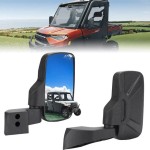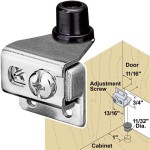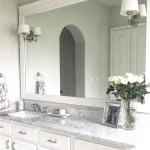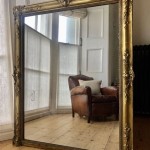Does a Concave Mirror Make Things Bigger?
Concave mirrors, curved inward like the inside of a bowl, possess unique optical properties that can make objects appear larger or smaller depending on their placement relative to the mirror. Understanding these properties requires examining the interplay between the mirror's curvature, the object's position, and the formation of images.
Key Points Regarding Concave Mirrors and Magnification:
- Focal Point: The focal point is a crucial concept in understanding concave mirrors. It is the point where parallel light rays converge after reflecting off the mirror's surface.
- Center of Curvature: This is the center of the sphere from which the mirror's curve is derived. It lies twice the distance of the focal point from the mirror's surface.
- Object Distance: The distance of the object from the mirror's surface significantly influences the image formed.
- Image Distance: The distance of the formed image from the mirror's surface, whether real or virtual.
- Magnification: The ratio of the image height to the object height, indicating whether the image is enlarged, reduced, or the same size as the object.
When an object is placed very close to a concave mirror, specifically between the mirror's surface and the focal point, an enlarged, upright, and virtual image is formed. This is the magnification effect most commonly associated with concave mirrors, such as those used in makeup mirrors.
Understanding Virtual Images:
- Virtual images cannot be projected onto a screen.
- They appear to be located behind the mirror's surface.
- Light rays do not actually converge at the location of a virtual image; they only appear to diverge from that point when traced back.
As the object moves farther away from the mirror and crosses the focal point, the image changes dramatically. When the object lies beyond the focal point, the image formed becomes real, inverted, and can be projected onto a screen. The size of the image, however, depends on the object's distance relative to the center of curvature.
Real Images and their Characteristics:
- Real images can be projected onto a screen.
- Light rays physically converge at the location of a real image.
- They are always inverted relative to the object.
If the object is located between the focal point and the center of curvature, the real image formed will be larger than the object and inverted. As the object moves further away from the mirror, beyond the center of curvature, the real image becomes smaller than the object and remains inverted. When the object is placed at the center of curvature, the real image is the same size as the object and is also inverted. Finally, when the object is at infinity (very far away), the reflected rays converge at the focal point, forming a very small, inverted, real image.
The Mirror Equation and Magnification Formula:
- Mirror Equation: 1/f = 1/do + 1/di where f is the focal length, do is the object distance, and di is the image distance.
- Magnification Formula: M = -di/do where M is the magnification, di is the image distance, and do is the object distance.
- A negative magnification signifies an inverted image, while a positive magnification indicates an upright image.
- A magnification greater than 1 indicates an enlarged image, while a magnification less than 1 indicates a reduced image.
These formulas provide a mathematical relationship between the object distance, image distance, focal length, and magnification. They allow for precise calculations of image characteristics given the object's position and the mirror's focal length. For example, using these formulas, one can predict the size and orientation of the image formed by a concave mirror for any given object placement.
The diverse image characteristics of concave mirrors make them useful in various applications. The magnifying property of concave mirrors when objects are placed close to them finds application in makeup mirrors, shaving mirrors, and dental tools. The ability to form real and inverted images is utilized in telescopes, headlights, and solar furnaces. By understanding the relationship between object placement and image characteristics, one can harness the power of concave mirrors for specific optical requirements.
The magnification produced by a concave mirror is not a fixed property; it's a dynamic relationship dependent on the object's location relative to the mirror's focal point and center of curvature. While concave mirrors are often associated with magnification, they can also produce smaller, real images. Therefore, the statement “concave mirrors make things bigger” is only conditionally true, specifically when the object is located between the mirror’s surface and the focal point.

Question Comparing The Sizes Of Images Produced By A Concave Mirror Nagwa
Objects In The Mirror Are Actually Images Article Khan Academy
Objects In The Mirror Are Actually Images Article Khan Academy
Objects In The Mirror Are Actually Images Article Khan Academy
How Do Reflections From Convex Mirrors Make Objects Appear Smaller Quora
Objects In The Mirror Are Actually Images Article Khan Academy
Under Which Condition A Concave Mirror Can Form An Image Larger Than The Actual Object Quora
Why Does The Car Side Mirror Display Objects Appear Further Than They Are Not Just Make As Quora
Which Mirror Produces An Image Bigger Than The Object Size Quora
Objects In The Mirror Are Actually Images Article Khan Academy







